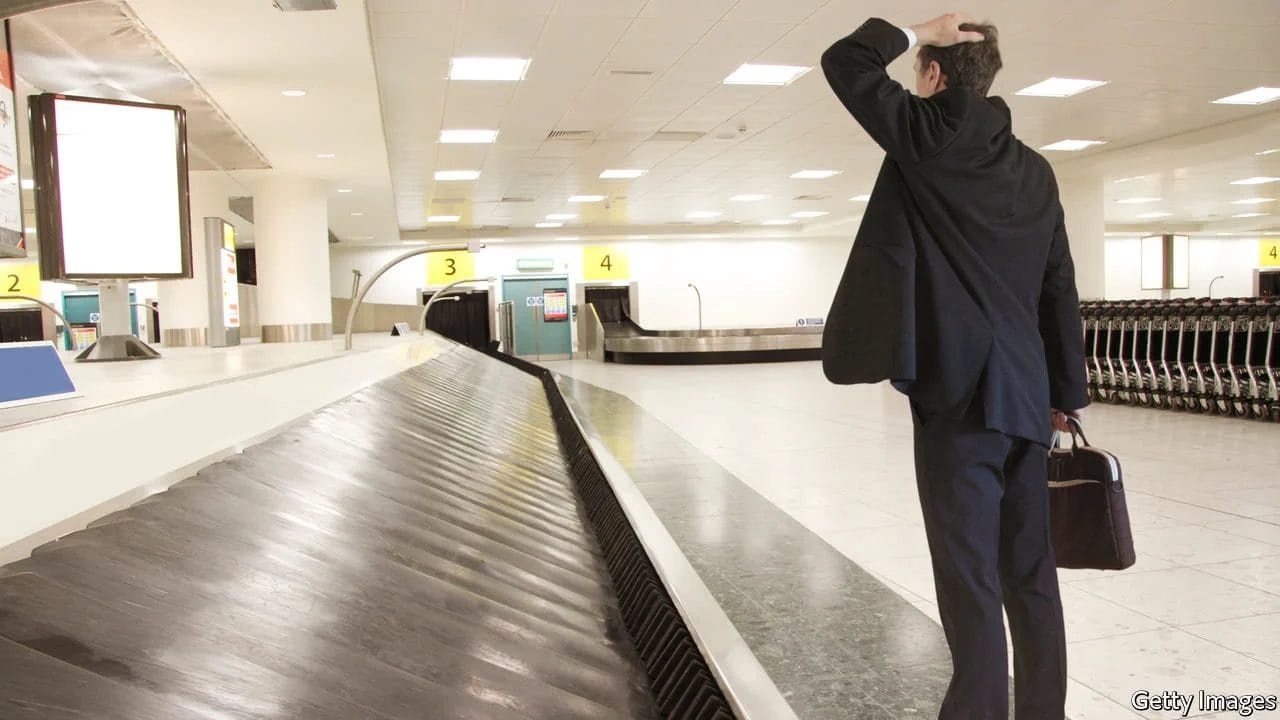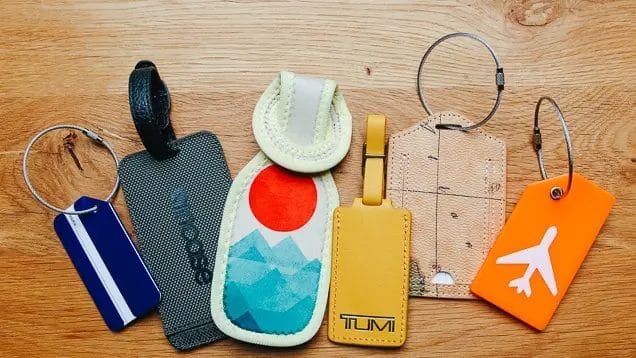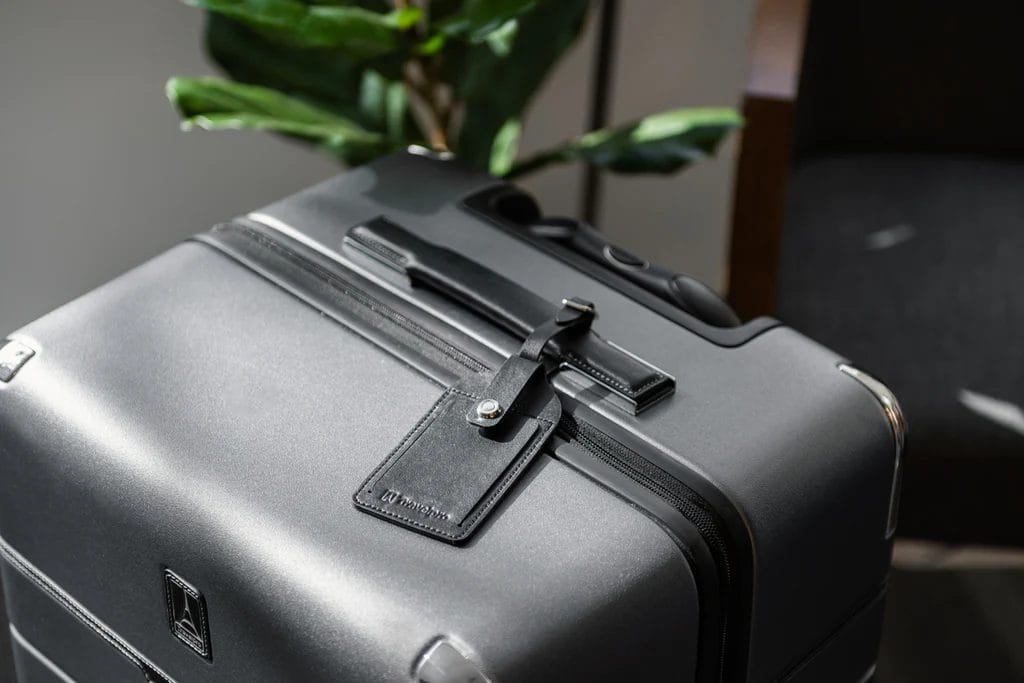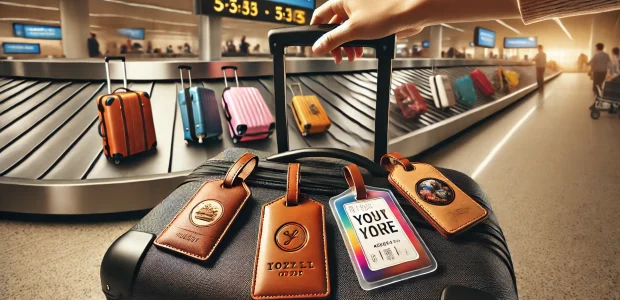Traveling should be about creating memorable experiences, not stressing over lost belongings. Discover how custom luggage tags can transform your travel experience and provide the peace of mind you deserve.
The True Cost of Lost Luggage (Statistics and Facts)
The sinking feeling of standing at an empty baggage carousel, realizing your luggage isn’t coming around, is something no traveler wants to experience. Yet, according to the U.S. Department of Transportation, airlines mishandled over 2 million bags in 2023 alone. That’s approximately 5-6 bags per 1,000 passengers. The financial impact is equally staggering—the average cost of a lost bag to travelers exceeds $1,800 when accounting for the value of items and time spent on recovery efforts.
Beyond monetary value, there’s the incalculable stress and disruption to your travel plans. A business meeting without appropriate attire or a vacation without essential personal items can significantly diminish your experience.

Common Scenarios That Lead to Lost Luggage
Most luggage doesn’t actually get “lost” permanently—it’s usually just delayed or misrouted. The most common scenarios include:
- Tight connections: When your layover is too short, your bags might not make the transfer in time
- Missing or damaged airline tags: The standard paper tags airlines attach can easily tear off during handling
- Similar-looking bags: In the sea of black suitcases, yours might be mistakenly claimed by another passenger
- Removed identification: External tags can be accidentally torn off during transit
What Airlines Do When Luggage Goes Missing
When luggage goes missing, airlines typically initiate tracking procedures using their baggage systems. However, these systems rely heavily on the airline’s identification tags—which aren’t always reliable. Without clear identification, locating your specific bag becomes significantly more challenging, often extending the recovery period from hours to days or even weeks.
How Custom Luggage Tags Prevent Travel Disasters
Custom luggage tags serve as your bag’s personal identification system, significantly reducing the risk of lost luggage scenarios. Unlike standard airline tags, custom tags remain with your luggage throughout its journey, providing clear identification at every stage of travel.
A quality custom luggage tag does more than just display your name—it creates visual distinctiveness that makes your bag instantly recognizable on the carousel and provides critical contact information should your bag be misplaced.
Visual Identification vs. Standard Airline Tags
Standard airline tags serve primarily as routing documents rather than identification tools. They’re designed for scanning by airline systems, not for helping you or others identify your bag. Custom luggage tags, on the other hand, serve dual purposes:
- Visual distinctiveness: Bright colors, unique designs, or personalized elements make your bag stand out
- Persistent identification: Unlike airline tags that may last for just one journey, custom tags provide ongoing identification across multiple trips
This visual distinctiveness reduces the likelihood of another passenger mistakenly taking your bag, while also making it easier for airline staff to identify your luggage if it gets separated from the standard tracking systems.
Materials and Durability Considerations
The effectiveness of a luggage tag is directly tied to its durability. Tags made from flimsy materials often don’t survive the rough handling of air travel. When selecting custom luggage tags, consider these material options:
- Leather: Offers a classic look with excellent durability and weather resistance
- Silicone or rubber: Flexible, waterproof, and highly resistant to tearing
- Metal: Maximum durability for frequent travelers, though potentially heavier
- High-grade plastic: Lightweight and affordable while maintaining reasonable durability
The connection between the tag and your luggage is equally important—look for steel cables or reinforced straps rather than thin plastic loops that can easily break during transit.

What Information Should Be on Your Luggage Tag
The information you include on your luggage tag requires a careful balance between providing enough details for your bag to be returned while protecting your privacy.
Privacy Concerns and Best Practices
While it might seem intuitive to put your home address on a luggage tag, security experts caution against this practice. A lost bag with your home address advertises an empty house to potential thieves. Instead, consider these privacy-conscious alternatives:
- Mobile phone number: Essential for immediate contact during travel
- Email address: Provides a non-location-specific way to reach you
- Work address: If comfortable, offers a physical return location without revealing your home address
- Last name only: First initial and last name provides identification without giving away too much personal information
Bold tip: Consider using a separate email address specifically for travel-related communications to reduce spam to your primary account.
International Travel Considerations
When traveling internationally, additional identification strategies become important:
- Include contact information in both English and the local language of your destination
- Consider adding QR codes that link to translated contact information
- Add the address of your accommodation at your destination
- For extended international travel, consider including multiple contact methods

Types of Custom Luggage Tags
The market offers various custom luggage tag options to suit different travel styles and preferences.
Traditional vs. Digital/Smart Tags
Traditional custom luggage tags remain popular for their reliability and simplicity. They don’t require batteries or connections and work worldwide without technological limitations. These typically include:
- Leather embossed tags
- Personalized metal plates
- Silicone or rubber tags with printed information
- Laminated photo ID tags
Digital and smart luggage tags represent the next evolution in luggage identification, offering additional features:
- QR codes that link to secure contact information
- NFC-enabled tags that can be scanned with smartphones
- GPS-tracking capabilities that integrate with mobile apps
- E-ink displays that can be updated remotely
While smart tags offer advanced features, they often come with higher price points and potential battery or connectivity limitations. The best choice depends on your travel frequency, destinations, and technological comfort level.
Personalization Options and Features
Custom luggage tags allow for various personalization options that serve both identification and personal expression:
- Monogrammed initials: Classic identification with a touch of elegance
- Family photos: Instantly recognizable and personal
- Bright, distinctive colors: Makes bags easy to spot on carousels
- Company logos: Ideal for business travelers
- Humorous sayings: Adds personality while making bags distinctive
How to Choose the Right Custom Luggage Tags
Selecting the perfect custom luggage tag involves considering several key factors beyond just appearance.
Material Comparison
Different materials offer varying benefits depending on your travel style:
| Material | Durability | Weather Resistance | Weight | Cost |
|---|---|---|---|---|
| Leather | High | Moderate | Medium | $$$ |
| Silicone | Very High | Excellent | Light | $$ |
| Metal | Exceptional | Excellent | Heavy | $$$ |
| Hard Plastic | Good | Good | Light | $ |
Frequent travelers should prioritize durability and weather resistance, while occasional travelers might find that more affordable options meet their needs adequately.
Design and Visibility Factors
The effectiveness of a luggage tag correlates directly with its visibility. Consider these factors:
- Contrast: Choose colors that stand out against your luggage
- Size: Larger tags are more visible but may be more prone to catching on handling equipment
- Reflective elements: Enhance visibility in low-light conditions
- Multiple tags: Consider using different tags on different sides of your luggage
Beyond Luggage Tags: Creating a Complete Luggage Security System
While custom luggage tags significantly reduce the risk of lost bags, combining them with complementary identification and tracking systems creates a comprehensive security approach.
Complementary Products for Tracking Luggage
For travelers seeking maximum peace of mind, consider combining custom luggage tags with:
- Luggage trackers: Bluetooth or GPS devices that allow you to track your bag’s location via smartphone
- Internal identification cards: Placed inside your luggage as backup identification
- Distinctive luggage straps or belts: Add another layer of visual identification
- Airport code accessories: Stylish tags and identifiers featuring your home or destination airport codes
- Luggage locks with identification plates: Combine security with identification
Backup Identification Methods
Smart travelers always implement redundant identification systems:
- External custom tags: Your primary identification
- Internal identification card: In case external tags are removed
- Distinctive markings or decorations: Makes your bag visually unique
- Digital records: Photos of your luggage and contents stored in the cloud
Customer Stories: How Custom Luggage Tags Saved the Day
Real Travel Scenarios and Solutions
Sarah’s Business Trip Rescue
When Sarah’s luggage was accidentally left behind during a tight connection in Frankfurt, the airline struggled to identify her black roller bag among dozens of similar ones in their holding area. The distinctive leather tag with her company logo made it immediately recognizable when staff searched the area, allowing it to be expedited on the next flight. She received her bag just four hours later, in time for her important meeting.
The Johnson Family Vacation
The Johnson family of five used matching custom photo tags featuring their family picture, with each bag having a different colored border. When one child’s bag was mistakenly taken by another passenger at Orlando International Airport, the distinctive family photo made it immediately apparent to the other traveler that they had the wrong bag. They were able to contact the Johnsons through the information on the tag and arrange a swap before even leaving the airport.
Where to Find Quality Custom Luggage Tags (Buying Guide)
The market for custom luggage tags spans from budget options to premium products designed for frequent travelers.
Price Comparisons and Value Considerations
When evaluating custom luggage tags, consider the following price ranges and what they typically offer:
- Budget options ($5-15): Basic customization, suitable for occasional travelers
- Mid-range options ($15-30): Better materials, more personalization options, good for regular travelers
- Premium options ($30-60+): Exceptional durability, advanced features, ideal for frequent travelers
The true value of a luggage tag comes from its durability and effectiveness. A slightly more expensive tag that lasts through years of travel often provides better value than repeatedly replacing cheaper options.
Recommendation: For most travelers, mid-range options offer the best balance of quality and value, with enough durability to last through multiple trips while providing clear identification and moderate personalization.
Frequently Asked Questions About Custom Luggage Tags
How effective are luggage tags at preventing lost bags?
While no system is 100% foolproof, custom luggage tags significantly reduce the risk of permanently lost luggage by providing clear identification and making your bags visually distinctive. When combined with internal identification, they create a highly effective luggage security system.
What information should I put on a luggage tag?
For security reasons, include your mobile number and email address, but avoid putting your home address. Consider using your work address or hotel address for physical location information. Include just enough information for someone to contact you if they find your bag.
Are digital luggage tags better than traditional tags?
Digital tags offer advanced features like remote updating and tracking, but traditional tags are more reliable as they don’t require batteries or connectivity. The best choice depends on your travel frequency, destinations, and comfort with technology. Many frequent travelers use both for redundancy.
How do airlines identify lost luggage without tags?
Airlines typically search for identifying features like brand, color, size, and unique characteristics. They may also open bags to look for internal identification or distinctive contents. This process is significantly more time-consuming and less reliable than having proper external identification.
What are the most durable materials for luggage tags?
Metal and silicone/rubber tags offer the best durability for frequent travelers. Quality leather is also excellent but may show wear over time. Avoid paper or thin plastic tags as these rarely survive the rigors of air travel handling.
Conclusion: Travel with Confidence Using Custom Luggage Tags
Custom luggage tags represent a simple yet remarkably effective solution to one of travel’s most common stressors. By investing in quality, personalized identification for your luggage, you’re not just buying a tag—you’re purchasing peace of mind and protection for your belongings.
The right custom luggage tag combines durability, clear identification, and visual distinctiveness while respecting your privacy concerns. Whether you opt for traditional tags with personal flair or embrace the latest smart tag technology, the investment will pay dividends through stress-free travel experiences.
Don’t wait until after experiencing the frustration of lost luggage to implement this simple solution. Consider pairing your custom luggage tags with stylish airport code accessories for a coordinated travel look that enhances both style and functionality. Take action now to ensure your next journey remains focused on creating memories rather than tracking down missing bags.
Browse our selection of premium custom luggage tags designed for the discerning traveler, or contact our team for personalized recommendations based on your specific travel needs.

